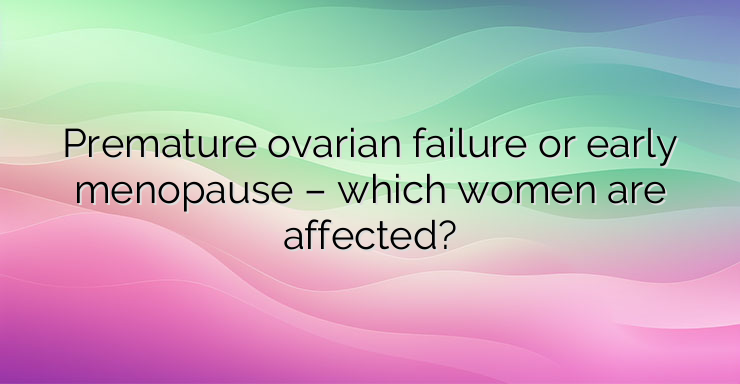About 1 in 1,000 women between the ages of 15 and 29 and 1 in 100 women between the ages of 30 and 39 are affected by premature ovarian failure, also called early menopause. Premature ovarian failure is the loss of ovarian function in women under the age of 40. Women in early menopause do not ovulate, i.e. they don’t ovulate every month. This loss may be due to fewer than normal follicles or ovarian dysfunction. Every woman is born with about 2 million ovarian follicles. About 300,000 – 400,000 remain until puberty. These follicles are essential for fertilization as they mature into fertile eggs that are released during ovulation. 300,000 follicles may sound like a large number, but, in fact, not every follicle becomes a mature egg. When the menstrual cycle begins, estradiol levels are low. The hypothalamus (which is responsible for maintaining normal hormone levels) sends a message to the pituitary gland, which in turn causes follicle-stimulating hormone levels to rise. This follicle-stimulating hormone causes the release of a mature egg. After the follicle matures, estrogen begins to be released. Estrogen, in turn, sends a message to the hypothalamus to stop producing follicle-stimulating hormone. If the follicles do not mature and produce estrogen to stop the production of follicle-stimulating hormone, it will continue to be produced and increase its levels in the blood. Once estrogen levels are high enough, the hypothalamus and pituitary gland “know” that there is a mature egg. Luteinizing hormone is released. Within 24-36 hours after luteinizing hormone levels rise, the mature egg is released and ready for fertilization. During this period, progesterone levels rise to prepare the uterine lining for implantation of a fertilized egg. If fertilization does not occur, hormone levels decrease and the uterine lining begins to shed. Menopause usually occurs around age 51 on average. Premature ovarian failure can occur at any age, most commonly around age 27. Dysfunctional follicles may be seen in early menopausal women and the patient may have menstrual bleeding that is often irregular. Symptoms of premature ovarian failure may include: irregular periods (various length of bleeding or change in flow), hot flashes, night sweats, decreased sexual desire, irritability, pain during intercourse, vaginal dryness. In some women, the dysfunction can only be detected by testing follicle-stimulating hormone levels. Unfortunately, in most patients, the cause of the condition remains unknown. However, there are some diseases that can increase the risk, namely:Autoimmune disorder; Genetic disease; Total hysterectomy; Turner syndrome; Virus infection; Insufficient secretion of gonadotropin; Eating Disorders Source: americanpregnancy.org/womens-health/premature-ovarian-failure/


Leave a Reply